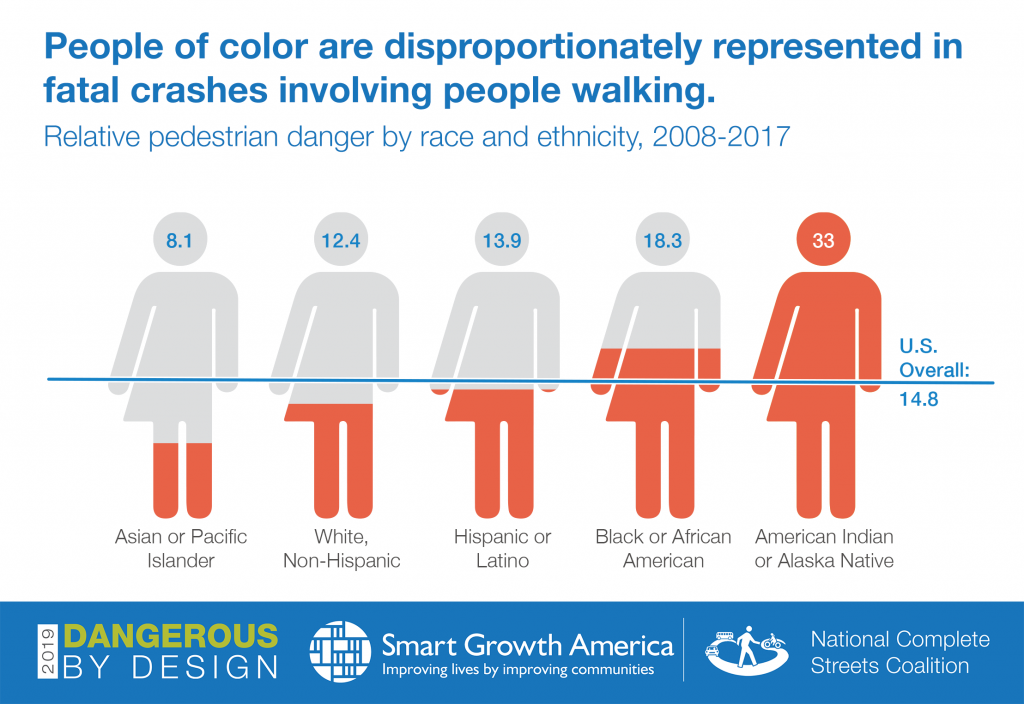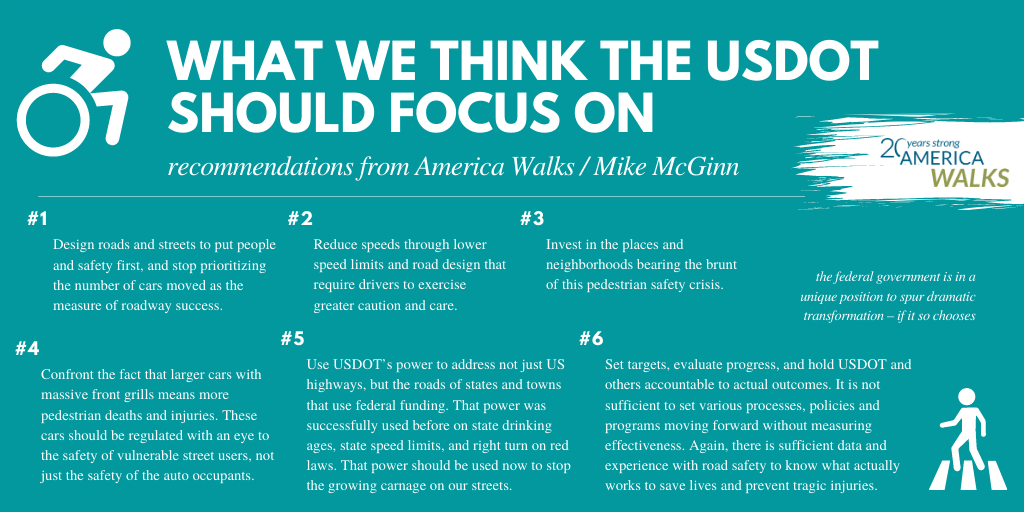
The following blog is a set of people-first policy recommendations that America Walks’ Executive Director Mike McGinn recently sent to the US Department of Transportation.
Dear USDOT,
Thank you for requesting input on pedestrian safety.
- Pedestrian deaths reached a 30-year high in 2019.
- They have increased 60% in the last ten years.
- Traffic crashes are a leading cause of death for children under the age of 15, and one in every five children killed in traffic are pedestrians.
- Pedestrians aged 65 and older accounted for 20% of all pedestrian deaths
- The pedestrian fatality rate for Native Americans is nearly five times higher than for white Americans, and for African Americans the rate is nearly twice as high.
- Similarly, pedestrians of poor metro areas are more likely to die than those in wealthy areas.

Pedestrian safety is a crisis in America, with the toll of death disproportionately falling upon people of color, low income folks, older people, and children.
America Walks appreciates that the US Department of Transportation is proposing a new focus on the issue, but the contemplated actions in the “Safe Systems” proposal do not approach the scale of this crisis.

The simple fact is that research and analysis tells us how to reduce deaths and serious injuries to pedestrians, but there has not been the political will to implement the changes needed. Those in charge have spent too much time focusing on changing individual behaviors, rather than focusing on the built infrastructure and systemic flaws that are generating death and injuries. That includes over reliance on police enforcement that is particularly problematic given racial profiling and police brutality against Black and Brown Americans.
We submit that the USDOT should focus on the following:
- Design roads and streets to put people and safety first, and stop prioritizing the number of cars moved as the measure of roadway success.
- Reduce speeds through lower speed limits and road design that require drivers to exercise greater caution and care.
- Invest in the places and neighborhoods bearing the brunt of this pedestrian safety crisis.
- Confront the fact that larger cars with massive front grills means more pedestrian deaths and injuries. These cars should be regulated with an eye to the safety of vulnerable street users, not just the safety of the auto occupants.
- Use USDOT’s power to address not just US highways, but the roads of states and towns that use federal funding. That power was successfully used before on state drinking ages, state speed limits, and right turn on red laws. That power should be used now to stop the growing carnage on our streets.
- Set targets, evaluate progress, and hold USDOT and others accountable to actual outcomes. It is not sufficient to set various processes, policies and programs moving forward without measuring effectiveness. Again, there is sufficient data and experience with road safety to know what actually works to save lives and prevent tragic injuries.
In summary, the federal government is in a unique position to spur dramatic transformation – if it so chooses. Setting clear goals and incentives will reward the local elected and agency officials who are prepared to put safety first, and compel defenders of the dangerous status quo to reexamine their approaches or risk losing federal funding. Lives are literally in your hands.
Thank you for the opportunity to comment. We look forward to working with you as the plan is finalized.
Mike McGinn
Executive Director
America Walks
Sources:
https://cdctransportation.org/www.cdc.gov/transportationsafety/pedestrian_safety/index.html
https://smartgrowthamerica.org/dangerous-by-design/
https://usa.streetsblog.org/2017/01/10/the-unequal-toll-of-pedestrian-deaths/
